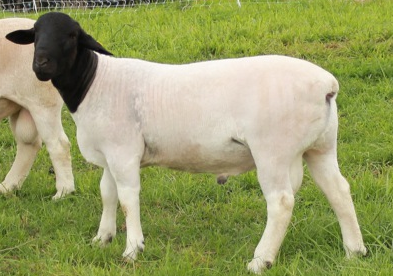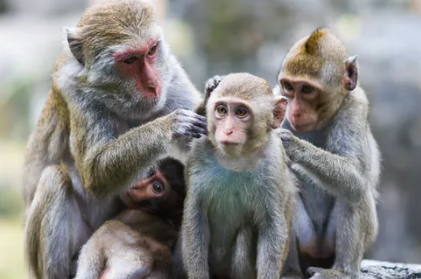Ruminant and non-ruminant animals represent two groups within the animal kingdom, that are classified by their digestive systems and feeding strategies or modes.
What Are Ruminant Animals?
Ruminant animals possess a complex, multi-chambered stomach that enables them to efficiently digest fibrous plant material. You can also say, they are animals or mammals that regurgitate the food from the stomach and chew it again. Ruminants are mostly herbivorous. The animals have a multi-chamber stomach structure which facilitates four main processes, that is, regurgitation, remastication, resalivation and re-swallowing.
Ruminants have a specialized stomach consisting of four compartments: the rumen, reticulum, omasum, and abomasum. This digestive system allows ruminants to extract nutrients from cellulose and other complex carbohydrates found in plants through a process of microbial fermentation.
- Rumen: The largest compartment of the stomach where microbial fermentation occurs. It serves as a fermentation vat where bacteria, protozoa, and fungi break down cellulose and other complex carbohydrates in plant material into simpler compounds like volatile fatty acids.
- Reticulum: Adjacent to the rumen, the reticulum helps trap large particles of food and forms cud, a mass of partially digested food that the animal regurgitates and chews again to further break it down.
- Omasum: Often referred to as the “manyplies,” the omasum acts as a filter, squeezing out excess moisture and absorbing nutrients from the partially digested food before passing it to the abomasum.
- Abomasum: This compartment is similar to the stomach of non-ruminant animals (monogastric animals like humans and dogs). It secretes digestive enzymes and acids to break down proteins, carbohydrates, and fats further. It is where the final stages of digestion occur before nutrients are absorbed in the small intestine.
Examples of ruminant include:
- Cattle
- Sheep
- Goats
- Buffalo
- Deer
- Elk
- Giraffes
- Camel

What You Need To Know About Ruminant Animals
- Ruminant animals have a specialized, multi-chambered stomach consisting of four compartments: the rumen, reticulum, omasum, and abomasum.
- They rely on microbial fermentation in the rumen to digest fibrous plant material, breaking down cellulose and other complex carbohydrates into absorbable nutrients.
- Ruminants engage in rumination, the process of regurgitating and rechewing their food, to further break down tough plant fibers and enhance digestion.
What Are Non-Ruminant Animals?
Non-ruminants also referred to as monogastric-animals have uncomplicated or a simple stomach structure which facilitates the normal digestion process where the ingested food is digested in a single process. Unlike ruminants, they have a single-chambered stomach and lack the specialized compartments for extensive fermentation of plant material. Instead, their digestive system consists of one stomach (or stomach-like structure) followed by the small and large intestines. Non-ruminants can be herbivorous, omnivorous or carnivorous.
Digestive process in non-ruminant animals:
- Stomach: Non-ruminants have a single-chambered stomach where food is initially broken down by stomach acids and digestive enzymes. This process helps to begin the breakdown of proteins, fats, and carbohydrates.
- Small Intestine: After passing through the stomach, partially digested food enters the small intestine, where the majority of nutrient absorption occurs. Enzymes from the pancreas and bile from the liver further break down food particles, allowing nutrients to be absorbed into the bloodstream.
- Large Intestine: Any remaining indigestible material passes into the large intestine, where water and electrolytes are absorbed, and waste products are formed into feces.
Examples of non-ruminant include
- Humans
- Primates
- Swine
- Dogs
- Cats
- Fowl
- Rabbit
- Horses

What You Need To Know About Non-Ruminant Animals
- Non-ruminant animals have a simpler, single-chambered stomach, unlike ruminants which have a multi-chambered stomach.
- They rely on enzymatic digestion in their stomach and intestines to break down food into absorbable nutrients.
- Non-ruminants can have varied diets, including both plant and animal-based foods.
- They do not engage in rumination like ruminant animals.
- Non-ruminants play diverse roles in ecosystems and human society, serving as omnivores, carnivores, or herbivores depending on the species.
Also Read: Difference Between Bobcat And Mountain Lion
Ruminant vs Non-Ruminant Animals: Key Differences
| BASIS OF COMPARISON | RUMINANT | NON-RUMINANT |
| Description | They are animals with a multi-chamber stomach structure which facilitates four main processes, that is, regurgitation, remastication, resalivation and re-swallowing. | They have uncomplicated or a simple stomach structure which facilitates the normal digestion process where the ingested food is digested in a single process. |
| Nature | They are mostly herbivorous. | They can be herbivorous, omnivorous or carnivorous. |
| Stomach Structure | Have a complex stomach with stomach compartments namely Rumen, Reticulum, Omasum and abomasums. | Have a simple stomach with only one compartment. |
| Reverse Peristalsis | Reverse peristalsis is common in ruminants. | Reverse peristalsis is absent in nonruminants. |
| Digestive System | Have a long digestive system. | Have a short digestive system. |
| Enzymes For Protein Digestion | They do not produce enzymes for protein digestion. | They produce enzymes for protein digestion. |
| Saliva Production | Produce more saliva with no carbohydrate digestive enzymes. | Produce less saliva with carbohydrate digestive enzymes. |
| Liver Size | They have a large liver when compared to non-ruminants animals. | They have a relatively small liver compared to that of ruminants. |
| Digestion Of Cellulose | They digest all plant carbohydrates including cellulose. | Digest carbohydrates except cellulose. |
| Canines | They have two blunt canines. | They have four sharp canines. |
| Molars And Premolars | The premolars and molars of the ruminant animals move in lateral direction. | Premolars and molars of ruminant animals move in vertical direction. |
| Regurgitation | Food undergo regurgitation in their stomach. | Food does not undergo regurgitation. |